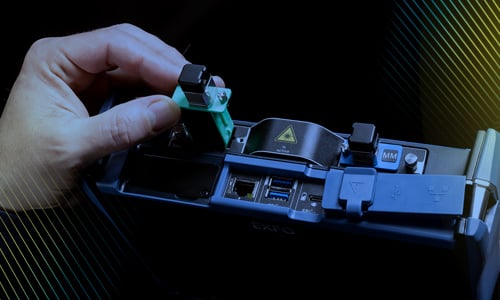Dispersion on Coherent Systems: What’s the Limit?
Now that 100 Gbit/s in the metro and longhaul is more than just a dream, and has moved past the stage of a few field trials and experiments, we have a much better idea as to those systems’ tolerance to dispersion effects, namely chromatic dispersion (CD) and polarization mode dispersion (PMD). In terms of tolerance, we are referring here to real limits, not marketing limits. Let’s start with CD.
CD is a linear phenomenon that is predictable and easy to compensate for, with no common or undesirable side effects. Knowing what the issue is, how it will behave, and that it won’t change over time makes it much simpler to compensate for. We are currently seeing astronomical tolerance values for CD from coherent systems vendors. And, coherent-only systems can indeed tolerate them quite well. In fact, to perform well, these systems are dependent upon CD, but the potential downfall is that if there is no CD at all, these systems may generate phase noise between adjacent wavelengths. And because information is coded on the phase, the presence of any phase noise will cause issues. On fibers with CD compensation (for example, when noncoherent wavelengths also are transported), coherent wavelengths may be subject to phase noise. Ironically, high CD is therefore desirable and required, whereas low CD can be detrimental. So, on hybrid systems with coherent and noncoherent wavelengths being transported on the same fiber, testing should be performed to ensure that the CD is low enough for the noncoherent, yet high enough to avoid phase noise.
PMD, on the other hand, is (as usual) a different beast. Once again, promoted values for PMD tolerances are very high, but since no PMD compensators are present in the systems, the above-mentioned CD issue is not present with PMD. Nonetheless, there is a PMD issue with coherent systems. In actual fact, there are two potential issues, but before discussing them further, it should be reiterated that PMD compensation in the digital signal processor (DSP) happens in quasi-real time. Instantaneous differential group delay (DGD) is monitored and quickly compensated for by the electronics, albeit within a certain range, hence the specifications of the system. Now, back to the two potential issues, which are described in detail below:
- Regardless of this tolerance, PMD is statistical, and any tolerance value may eventually be exceeded. The higher the average PMD value, the higher the possibility of exceeding the limit, i.e., of having a value too high for the tracking system to compensate for. When this happens, the tracking system loses sight of its target, and starts scanning. The DGD may fall back within the tolerance limit, but the tracking system may not detect it right away. The compensation will then fail for a few moments, even if the PMD has fallen back within range.
- If a high-PMD section is preceded by or within a section of fiber where high polarization scrambling could occur (for example, an aerial section or a section underneath a bridge), the sudden, potential high change in DGD may be too fast for the tracking device to follow. As mentioned above, if the tracking system loses sight of the target (and in this case the target stays within range, but changes too quickly), it will spends valuable time trying to relocate it.
So, while PMD issues and outages are less frequent due to extra tolerance and real-time compensation, if an issue does occur in connection with noncoherent, it may last several milliseconds or much longer, thus creating bursts of errors rather than isolated errors. So, in a nutshell, coherent systems are much more resistant to dispersion (although not immune to them), and should therefore be considered in your fiber characterization plans. For more information on these subjects, download our CD and PMD reference guides.




